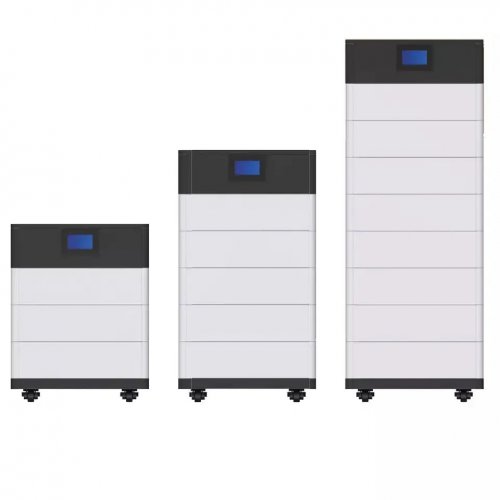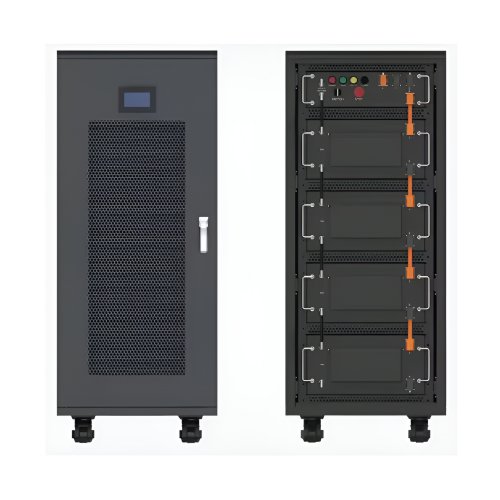Energy Density Comparison Review: Unpacking The True Power Behind Modern Power Banks
In an era where our lives are increasingly dependent on mobile devices, the quest for a reliable power source is never-ending. While specifications like capacity (mAh) and wattage (W) often dominate the marketing, a more critical, albeit less discussed, metric is energy density. Measured in watt-hours per kilogram (Wh/kg) or watt-hours per liter (Wh/L), energy density defines how much energy a battery can store relative to its size and weight. This review delves into a head-to-head energy density comparison of two popular power banks on the market: the sleek, modern Anker Prime 20,000mAh (PowerCore 24K) and the robust, high-capacity HomSolar Delta Mini 882Wh (Solar Generator). Our goal is to move beyond the specs sheet and understand what this technical term truly means for your daily use.
Product Function: More Than Just a Number
First, it's crucial to understand what we're comparing. The Anker Prime is a traditional lithium-ion power bank designed for portability and charging smartphones, tablets, and small laptops. Its 20,000mAh (74Wh) capacity is packaged in a compact, pocketable form factor. Its function is straightforward: provide on-the-go top-ups via USB-C and USB-A ports.
The HomSolar Delta Mini, however, belongs to a different category often called portable power stations. It utilizes Lithium Iron Phosphate (LFP) chemistry and boasts a massive 882Wh capacity. It's designed not for a pocket but for a car trunk, catering to camping trips, tailgating, or as a home backup power source. It features multiple AC outlets, DC ports, and USB ports, capable of running mini-fridges, CPAP machines, and power tools.
The core function of both is to store and deliver energy, but their applications are worlds apart, making the energy density comparison both challenging and enlightening.
The Energy Density Deep Dive: Advantages and Disadvantages
Anker Prime (Lithium-ion/Polymer):Advantages (High Energy Density): The Anker Prime's greatest strength is its excellent volumetric energy density (Wh/L). This allows it to pack a substantial 74Wh of energy into a device barely larger than a modern smartphone. This high energy-to-size ratio is the reason it's so portable and convenient for everyday carry. You get a lot of juice without the bulk.Disadvantages: The high energy density of traditional Li-ion chemistry comes with trade-offs. Firstly, it generally has a shorter overall lifecycle (300-500 full cycles before significant degradation) compared to LFP. Secondly, these batteries are more sensitive to high temperatures, which can accelerate aging and, in extreme cases, pose safety risks. The total energy available is also limited by its portable design.
HomSolar Delta Mini (LFP Chemistry):Advantages (Safety and Longevity): The Delta Mini’s LFP chemistry sacrifices some energy density for immense benefits in safety and lifespan. It is thermally more stable and much less prone to thermal runaway, making it safer for home use. Its most significant advantage is its longevity, rated for over 3,000 cycles before degrading to 80% capacity. This means it will last for years of regular use. The total energy available (882Wh) is in a different league, capable of powering larger appliances.Disadvantages (Lower Energy Density): The primary drawback is immediately apparent: its weight and size. To achieve its massive capacity with LFP technology, the unit is significantly larger and heavier than the Anker. Its gravimetric energy density (Wh/kg) is lower. This isn't a device you carry around; it's one you transport. Its "portability" is relative to a gasoline generator, not to a pocket power bank.
Actual Usage Experience: Where Theory Meets Practice
Testing these two products side-by-side highlights the real-world implications of energy density.
Carrying the Anker Prime for a day in the city is a breeze. It slides into a backpack's side pocket without adding noticeable weight. It charged a smartphone from 0% to 100% nearly four times, which is impressive for its size. The high energy density means you can forget you're carrying a day's worth of extra power. However, on a weekend camping trip, its limitations were clear. It could recharge phones and a Bluetooth speaker but was exhausted by the second day, leaving larger devices like a portable cooler powerless.
The HomSolar Delta Mini, while requiring a dedicated effort to move, was a revelation during a weekend camping test. Its lower energy density per kilogram is forgiven when it powers a string of lights, charges all devices simultaneously, and even runs a small electric kettle for morning coffee. It provided peace of mind and comfort far off the grid. The weight is a fair trade for the utility it provides in its intended scenario. It’s not about daily convenience; it's about capable, reliable energy independence for short durations.
Objective and Balanced Conclusion
This energy density comparison reveals that there is no "better" or "worse" technology, only what is appropriate for the task.
The Anker Prime is the undisputed champion ofportable energy density. It is the perfect product for the urban commuter, student, or traveler who needs to keep their personal electronics alive throughout the day without being weighed down. Its compromise lies in total capacity and long-term resilience.
The HomSolar Delta Mini is the master oftotal capacity and durability, leveraging its different chemistry to prioritize safety and a incredibly long service life over sleek portability. It is the ideal solution for anyone needing substantial off-grid power for appliances, short-term home backup, or extended outdoor adventures.
Ultimately, this comparison underscores a critical lesson for consumers: look beyond the marketed capacity. Understand the energy density and the chemistry behind it. If your priority is slipping power into your pocket, a high-energy-density Li-ion power bank is your answer. If you need to power your world away from an outlet, accepting greater bulk for vastly more energy and safety is the wiser choice. Your needs define the winner.
Customized/OEM/ODM Service
HomSolar Supports Lifepo4 battery pack customization/OEM/ODM service, welcome to contact us and tell us your needs.


HomSolar: Your One-stop LiFePO4 Battery Pack & ESS Solution Manufacturer
Our line of LiFePO4 (LFP) batteries offer a solution to demanding applications that require a lighter weight, longer life, and higher capacity battery. Features include advanced battery management systems (BMS), Bluetooth® communication and active intelligent monitoring.

Customised Lithium Iron Phosphate Battery Casing
ABS plastic housing, aluminium housing, stainless steel housing and iron housing are available, and can also be designed and customised according to your needs.

HomSolar Smart BMS
Intelligent Battery Management System for HomSolar Energy Storage System. Bluetooth, temperature sensor, LCD display, CAN interface, UART interface also available.


Terminals & Plugs Can Be Customized
A wide range of terminals and plugs can be customised to suit the application needs of your battery products.

Well-designed Solutions for Energy Storage Systems
We will design the perfect energy storage system solution according to your needs, so that you can easily solve the specific industry applications of battery products.



About Our Battery Cells
Our energy storage system products use brand new grade A LiFePO4 cells with a battery lifespan of more than 4,000 charge/discharge cycles.



Applications in Different Industries
We supply customized & OEM battery pack, assemble cells with wiring, fuse and plastic cover, all the cell wires connected to PCB plug or built BMS.
Applications: E-bike, Electric Scooter, Golf Carts, RV, Electric Wheelchair, Electric Tools, Robot Cleaner, Robot Sweeper, Solar Energy Storage System, Emergency Light, Solar Power Light, Medical Equipment, UPS Backup Power Supply.
We can provide you with customized services. We have the ability to provide a vertical supply chain, from single cells to pack/module and to a complete power solution with BMS, etc.


HomSolar (Shenzhen) Technology Co., Ltd
























